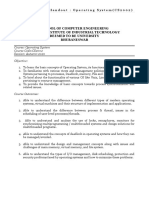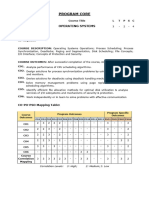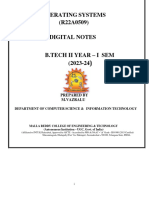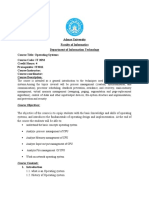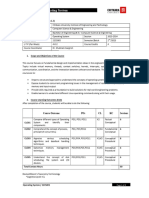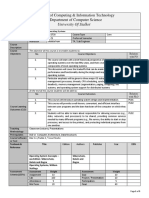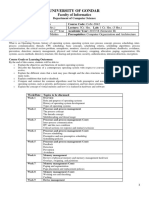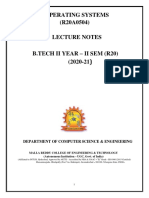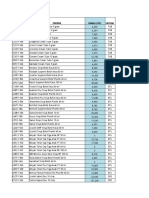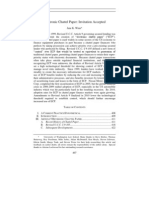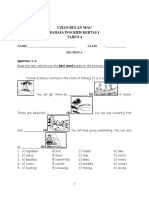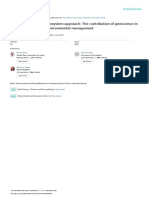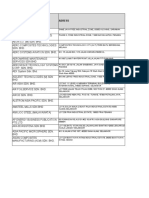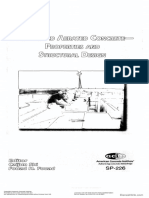0% found this document useful (0 votes)
112 views4 pagesOperating System Course Guide
This document provides an overview of a course on operating systems. The course objectives are to learn basic OS concepts, functions, views, policies, and resource management. It will cover processes, deadlocks, memory management, file systems, I/O operations, and process synchronization. The course will be taught over 48 days and cover topics like OS types, scheduling, concurrency, virtual memory, and security.
Uploaded by
kanishkrajsharma22Copyright
© © All Rights Reserved
We take content rights seriously. If you suspect this is your content, claim it here.
Available Formats
Download as PDF, TXT or read online on Scribd
0% found this document useful (0 votes)
112 views4 pagesOperating System Course Guide
This document provides an overview of a course on operating systems. The course objectives are to learn basic OS concepts, functions, views, policies, and resource management. It will cover processes, deadlocks, memory management, file systems, I/O operations, and process synchronization. The course will be taught over 48 days and cover topics like OS types, scheduling, concurrency, virtual memory, and security.
Uploaded by
kanishkrajsharma22Copyright
© © All Rights Reserved
We take content rights seriously. If you suspect this is your content, claim it here.
Available Formats
Download as PDF, TXT or read online on Scribd
/ 4
